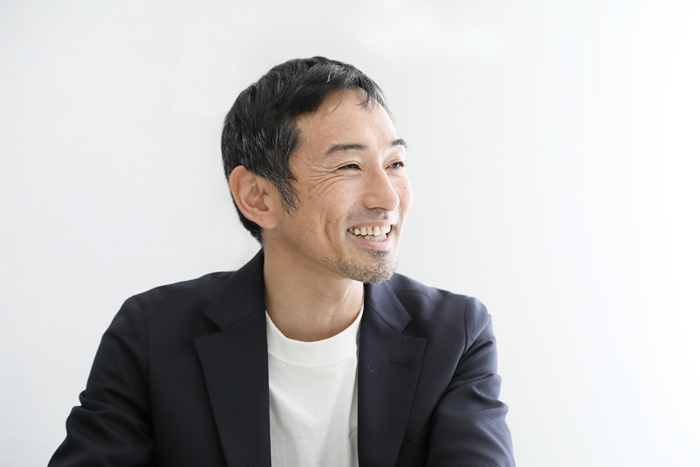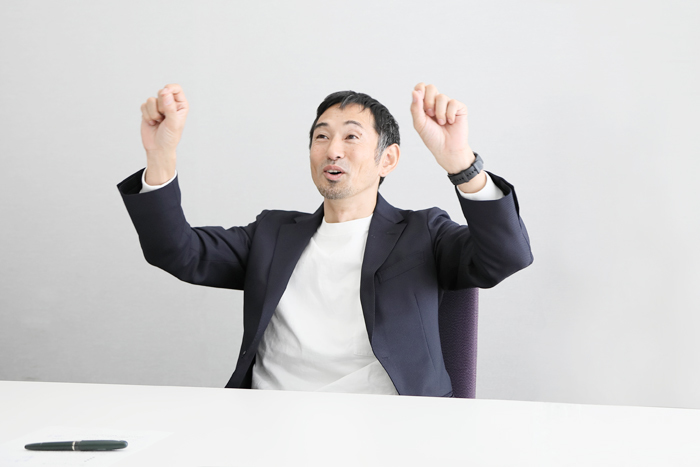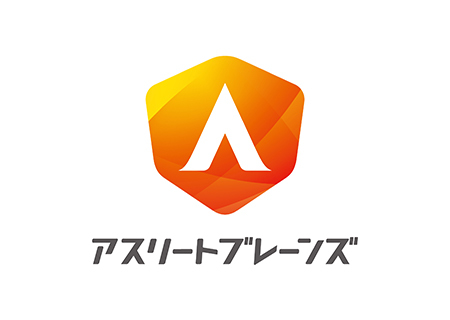A serial interview column where Mr. Dai Tamesue freely discusses "things on his mind right now." The only set theme is "What is autonomy? What is tolerance?" Mr. Tamesue shares his thoughts on various "things on his mind" in response to the mysterious "interviewer's" unexpected prompts. Well then. What kind of stories will emerge this time...? Stay tuned.
──Starting this time, I'd like to ask you about a new theme.
Tamura: I look forward to it.
──As usual, I've come up with a rather unconventional theme. It's about "What exactly is breathing?" When we think of athletes, we tend to imagine things like "muscle strength," "bones," or "how to move the body," but I believe "breathing" is just as important. First, a broad question: What does "breathing" mean to an athlete?
Tametsu: You're absolutely right. It's a crucial element for improving performance. Though we say "breathing," I actually think there are two types: "real breathing" and "abstract breathing." Real breathing involves things like aerobic exercise or controlling tension.
──Regarding controlling tension, that's like "taking deep breaths before a competition," right?
Tamesue: Exactly. There's an interesting story about an archery athlete. Apparently, breathing causes the body to sway slightly, which can cause them to miss the target.
──Huh? So, do they hold their breath when shooting?
Tamesue: They breathe properly, but they do it in the gap between inhaling and exhaling. What's interesting is that they're not even aware they're doing it.
──The ultimate relaxation, huh? Maybe that applies to martial arts in general.

Tamematsu: Regarding abstract breathing, you know how there's "A-Un breathing"? It's not about the physical act of inhaling and exhaling, but rather breathing as a concept.
──I really wanted to ask about that. Watching soccer, for example, players who start running in perfect sync will pass in perfect sync too. Since you were an individual athlete, you probably weren't involved in that kind of team-based "A-Un breathing," but wasn't there still a kind of "A-Un breathing" where you sensed a rival running beside you about to pick up the pace?
Tamesue: Indeed, that aspect exists. After all, you're not racing entirely alone.
──What exactly is it? The true nature of that unspoken understanding. It's not just intuition; calling it "breathing" is spot on. It's like the initial clash in sumo wrestling.
Tamesue: I think it's "pattern recognition based on past experience." Anticipation might also fall under that. It's a back-and-forth of thought within the relationship with your opponent. If I act like this, the other person will surely act like that.
──I see.
Tamemasu: In track and field, it's said that Japan's relay teams became strong because of "the sheer number of training camps." In relays, you place a marker, the runner approaches from the opposite direction, and you start running the moment they pass it. Apparently, they make tiny adjustments based on the other runner's condition. This is my hypothesis: by spending the same amount of time together, you understand the other person's baseline condition—their daily rhythm—and use that baseline to fine-tune your start timing.
──It's truly a matter of perfect timing. (Continued in #34)
(Interviewer: Web Dentsu Inc. Editorial Department)
From Hibi, Athlete Brains Production Team
This time's theme was "breathing." The idea that the relay team's strength might have come from "the sheer number of training camps" is fascinating. Applied to business, it offers hints on how to connect strength across organizational boundaries and how to link the power of teams and individuals. Numerous techniques and know-how for enhancing organizational performance exist in the world. Among these, the tacit knowledge of "relay races" – which deliver world-class performance – stands out as a metaphor that feels like a high-priority approach worth pursuing. By applying the tacit knowledge of athletes' top-level performance to business, we might achieve breakthroughs that break the mold.
Athlete Brains Production Team Dentsu Inc. / Akimichi Hibi (3CRP) · Kanako Nakanishi (BXCC) · Genta Arahori (Late Bureau)
"Athlete Brains," spearheaded by Dai Tamesue.
For details on this team that connects the knowledge cultivated by athletes to solving challenges in the world (businesses and society), click here.











